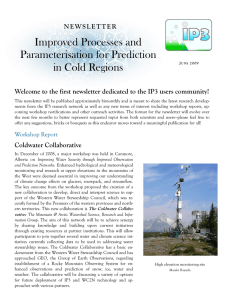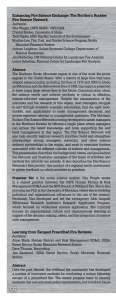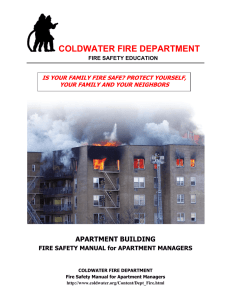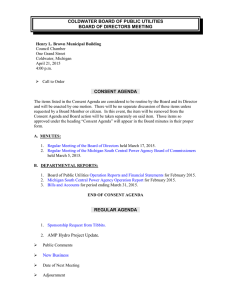Coldwater Science Collaborative a support network for Water Users, Water
advertisement
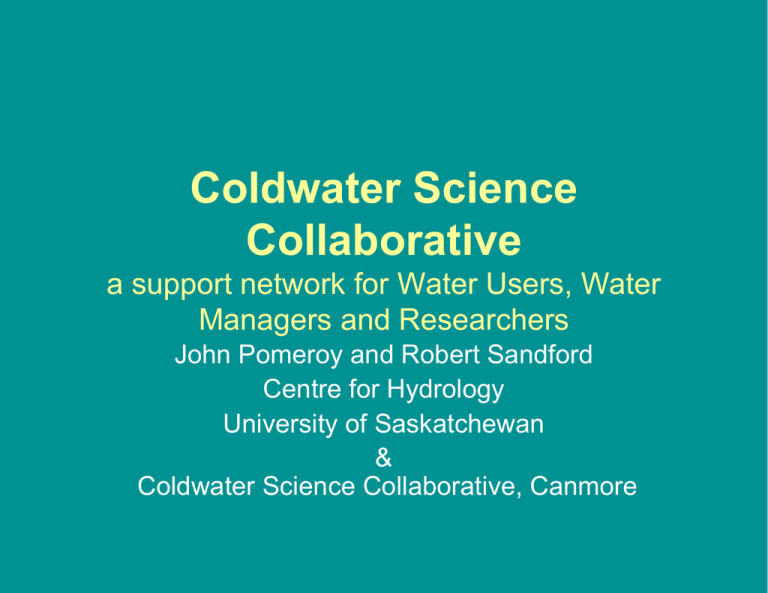
Coldwater Science Collaborative a support network for Water Users, Water Managers and Researchers John Pomeroy and Robert Sandford Centre for Hydrology University of Saskatchewan & Coldwater Science Collaborative, Canmore Improving Water Security through Integrated Observation and Prediction Methods Canmore, Alberta December 2008 Canmore Outcomes • Coldwater Science Collaborative – Formation of Steering Group Dec 2008 – Letter of Support from Western Water Stewardship Council of western premiers, March 2009 – Endorsement by US-Canada GEO as a testbed for cold climate hydrology and climate, June 2009 • Univ of Calgary Biogeoscience Institute provides building for Coldwater Collaborative, June 2009 • Pomeroy and U of S IP3 Secretariat move to Kananaskis to get Collaborative started, July 2009 • Western Watershed Climate Research Collaborative suggested as a non-profit corporate vehicle for Coldwater Science Collaborative, Sept 2009 • Concept of Rocky Mountain Observing System explored, developed – Discussions amongst Env Can, NRCan, provinces, universities on station needs, data assimilation and sharing – Informing Columbia River Basin Treaty discussions – AWRI discussions Canadian Rockies are the Hydrological Apex of North America Rocky Mountain Snow and Ice southernmost, interior summer snow water reserves Snow depth in January Snow depth in June Canadian Rocky Mountains Saskatchewan -Nelson River Basin Drains Rocky Mountain and flows East across Alberta, Saskatchewan and Manitoba to Hudson Bay Prairie Agriculture & Drought Snow-covered Period is Declining in Rockies Average change (days/yr) in snow cover duration in the second half (Feb.-Jul.) of the snow year over the period 1972-2000. Derived from the NOAA weekly satellite snow cover dataset Glacial Decline Rapid in Rockies Summer Flows Declining Rapidly Late summer flows large and dropping rapidly Bow River at Banff, Mean August Flow Trend -24.9% since 1910, Statistically Significant at 99.9% Probability New Observations Needed • Station density is too low. To meet WMO standards for mountain regions – 450% increase in hydrometric stations – 2250% increase in precipitation stations • Stations are not located where precipitation volumes are found – Stations are at lower elevations but water resources are at higher elevations • Clearly an alternative strategy is needed that takes advantage of earth observations and innovative station designs and operation Coldwater Science Collaborative The Coldwater Science Collaborative will aid in the development of enhanced, integrated observations and predictions to couple key issues relating to: – Dynamics of snow, glaciers, groundwater, permafrost, wetlands and streams in upland watersheds, – Downstream flooding, drought and water supply – Long term water supply change – Transboundary Waters Coldwater Strategic Goals i) determine where new monitoring capacity should be established at high latitudes and altitudes. ii) assess the long term sustainability of western and northern Canadian water resources and those that flow into the United States. iii) improve, understand and share information to help prepare for water supply changes. iv) providing new information on water resources that can underpin decision-making and policy development in western and northern Canada. Coldwater Overall Science Goals • Advance our understanding and prediction of water and energy cycles in the western mountains and adjacent cold regions of Canada • Improve our ability to assess change and predictive uncertainty in mountain and cold regions headwaters that arise from changing climate and land use • Ultimately – contribute to the assessment of the long term sustainability of western and northern water resources How to Move Forward • US-Canada GEO testbed in Rockies – CGEO wants this to move forward but no funds…. – NOAA NOHRSC running Snodas in region now. • Mobilise resources, techniques, data management of water resources components of 3 current CFCASsupported university-government research networks (45 investigators, IP3, DRI, WC2N) to a new integrated water resources sustainability initiative – Rocky Mountain Water Observation and Prediction System? – Ecohydrology and climate change initiative?
